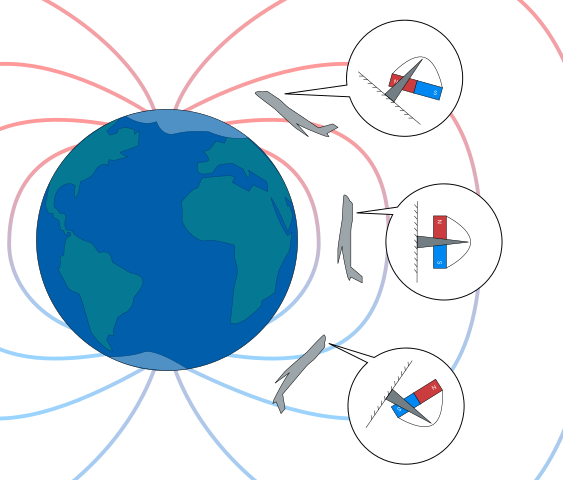
How Is Earth’s Magnetic Force Generated?
Ever since I learned about magnetism at school, I’m afraid to say I have taken its existence entirely for granted and not really questioned why it exists. Now I believe it is time to rectify this.
The Source
The Earth’s magnetic field is generated within its fluid outer core by what is described as a self-exciting dynamo process. This fluid core is composed of slowly moving molten iron, and as electrical current flows through this, it generates the magnetic field of the earth. It has been likened to an electrical generator which enables the convective kinetic energy to be converted to electrical and magnetic energy. As long as there is enough energy present to maintain convection the magnetic field will continue to be generated, hence the self-sustaining status. This is considered the primary source of the Earth’s magnetic field.
However, the magnetic field that is observed at the Earth’s surface is in small part generated by the crust of the Earth as well, which is permanently magnetised and does not depend on the convective kinetic process as in the core. This permanent magnetisation is generated through the ordered orientation of atoms within rocks such as magnetite and haematite in the earth’s upper lithosphere which includes the earth’s rigid crust and upper mantle. But, at very high temperatures closer to the earth’s core, this permanent magnetisation is lost as the atomic structures that maintain magnetism break down.
Monitoring Our Magnetic World
We know about the continued existence of the magnetic field thanks to Geomagnetic observatories which are situated all over the world on lands, ships, aircraft, and even satellites. As an aggregate community, they accurately and continuously record the geomagnetic field at one-minute or less intervals over a long period of time.
NASA is actively monitoring a strange anomaly in Earth’s magnetic field which is called the South Atlantic Anomaly and is a strange region of lower magnetic intensity in the skies above us. They have likened it to a ‘dent’ in Earth’s magnetic field or a ‘pothole in Space’. Have no fear, no one is about to fall into it as it doesn’t affect life on Earth. However, it does affect orbiting spacecraft, including the International Space Station, (hence NASA’s interest), as they loop around the Earth at low altitudes, occasionally causing onboard technological systems to short-circuit and malfunction.
If you are interested in studying a Science, Oxford Open Learning offers you the chance to do so at a number of levels, listed below. You can also Contact Us here.